Opening Surveys
Marin: Alekhine Defence B04
1.e4
Nf6
2.e5
Nd5
3.d4 d6 4.Nf3
g6 5.Be2
Bg7
6.0-0 0-0 7.c4
Nb6
8.Nc3
Nc6
9.exd6 cxd6
|
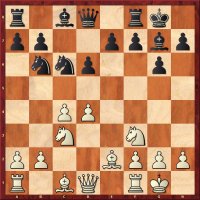 |
|
In this line White is not aggressive and
develops with standard moves; of course he
cannot hold the e5-point either. However, as
Marin’s investigations show, Black must play
very accurately to hold things level. |
Schandorff: Caro-Kann B12
1.e4 c6 2.d4 d5 3.f3 dxe4 4.fxe4 e5 5.Nf3
Bg4
6.Bc4
Nd7
7.0-0
Ngf6
8.c3
Bd6
 |
|
In CBM 133 Sergey Erenburg introduced the
variation with 3...e6, but not every Caro-Kann
player wants to have positions which are related
to those from the French. Schandorff shows you
how to achieve satisfactory play with 3...dxe4. |
Grivas: Sicilian B33
1.e4 c5 2.Nf3
Nc6
3.d4 cxd4 4.Nxd4
Qb6
5.Nb3
Nf6
6.Nc3
e6 7.Qe2
 |
|
The setup with 4...Qb6
is called the Grivas Sicilian – so the author is
writing about his own system. He is not only a
theoretician but also the greatest practitioner
of the move 4...Qb6.
Part 1 of his series deals with the Hera
Variation. |
Kritz: French Defence C10
1.e4 e6 2.d4 d5 3.Nc3
dxe4 4.Nxe4
Nbd7
5.Nf3
Ngf6
6.Nxf6+
Nxf6
7.c3
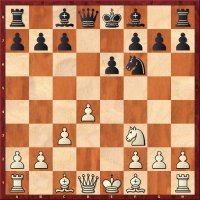 |
|
Since Kasparov’s great game against Ponomariov
(Linares 2002) 7.c3 has been considered the most
ambitious attempt to demonstrate an opening
advantage for White. Kritz shows how, with exact
play, Black can more or less achieve equality. |
Marin: Bishop's Opening C24
1.e4 e5 2.Bc4
Nf6 3.d3
c6 4.Nf3
d5 5.Bb3
Bd6
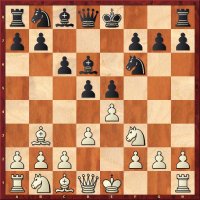 |
|
The variation with 3...c6 against the Bishop’s
Game is a safe choice. As the author shows,
White can perhaps achieve a mini advantage, but
it should not be enough to win the game. |
Stohl: 2 Knights Game C58
1.e4 e5 2.Nf3
Nc6 3.Bc4
Nf6 4.Ng5
d5 5.exd5 Na5
6.Bb5+ c6 7.dxc6
bxc6 8.Bd3
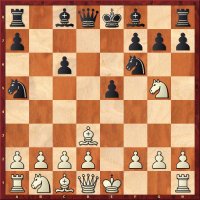 |
|
The move 8.Bd3
immediately sets Black a problem, because the
experts are not yet in agreement as to the best
reply for Black in this as yet relatively
infrequently played variation. Igor Stohl gives
you a few answers. |
Kuzmin: Ruy Lopez C60
1.e4 e5 2.Nf3
Nc6 3.Bb5
Nge7
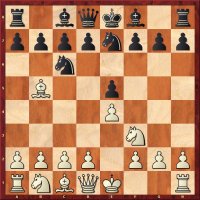 |
|
Levon Aronian successfully employed Cozio’s move
3...Nge7
in the World Blitz Championship. This prompted
the author to put under the microscope the game
played by the Armenian. |
Postny: Ruy Lopez C65
1.e4 e5 2.Nf3
Nc6 3.Bb5
Nf6
4.0-0 Bc5 5.Ne5
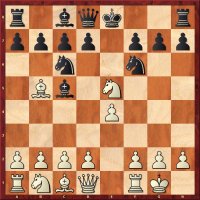 |
|
In 4...Bc5
Black has an excellent alternative to 4...Nxe4
(the Berlin Wall). The critical variations arise
after 5.Nxe5,
but according to Postny’s analysis Black can
hold his own. |
Langrock: Ruy Lopez C69
1.e4 e5 2.Nf3
Nc6 3.Bb5
a6 4.Bxc6 dxc6
5.0-0 f6 6.d4 exd4 7.Nxd4
c5 8. Ne2
Qxd1 9.Rxd1
Bd7 10.Be3!
0-0-0
11.Nbc3
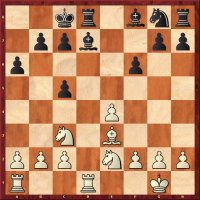 |
|
Langrock’s investigations demonstrate that Black
can perhaps not achieve equality in this main
line of the Exchange Variation. |
Rogozenco: Albin's Countergambit D08
1.d4 d5 2.c4 e5 3.dxe5 d4 4.Nf3
Nc6 5.Nbd2
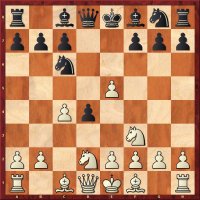 |
|
In recent years the usual 5.g3 has very much
gone done in the world. On the other hand,
Rogozenco’s repertoire suggestion based on 5.Nbd2
is looking good – White gets a safe advantage
everywhere. |
Karolyi: Queen's Gambit Accepted D20
1.d4
d5 2.c4 dxc4 3.Nf3
c5 4.Nc3
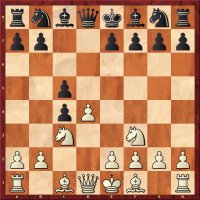 |
|
It seems that White cannot achieve a superior
position in any of the variations examined
involving an early transition to an endgame, in
spite of appearing to have an initiative. |
|
Krasenkow: King's Indian Defence E90
1.d4
Nf6 2.c4 g6 3.Nc3 Bg7 4.e4 d6 5.Nf3 0-0 6.h3 e5
7.d5 a5
 |
|
In his third and last contribution on
the 6.h3 king’s Indian, Michal Krasenkow
examines the main line with 7...a5. Here
too, he describes a lot of subtleties
which procure for the person who is in
the know a clear advantage over his
opponent. |
|